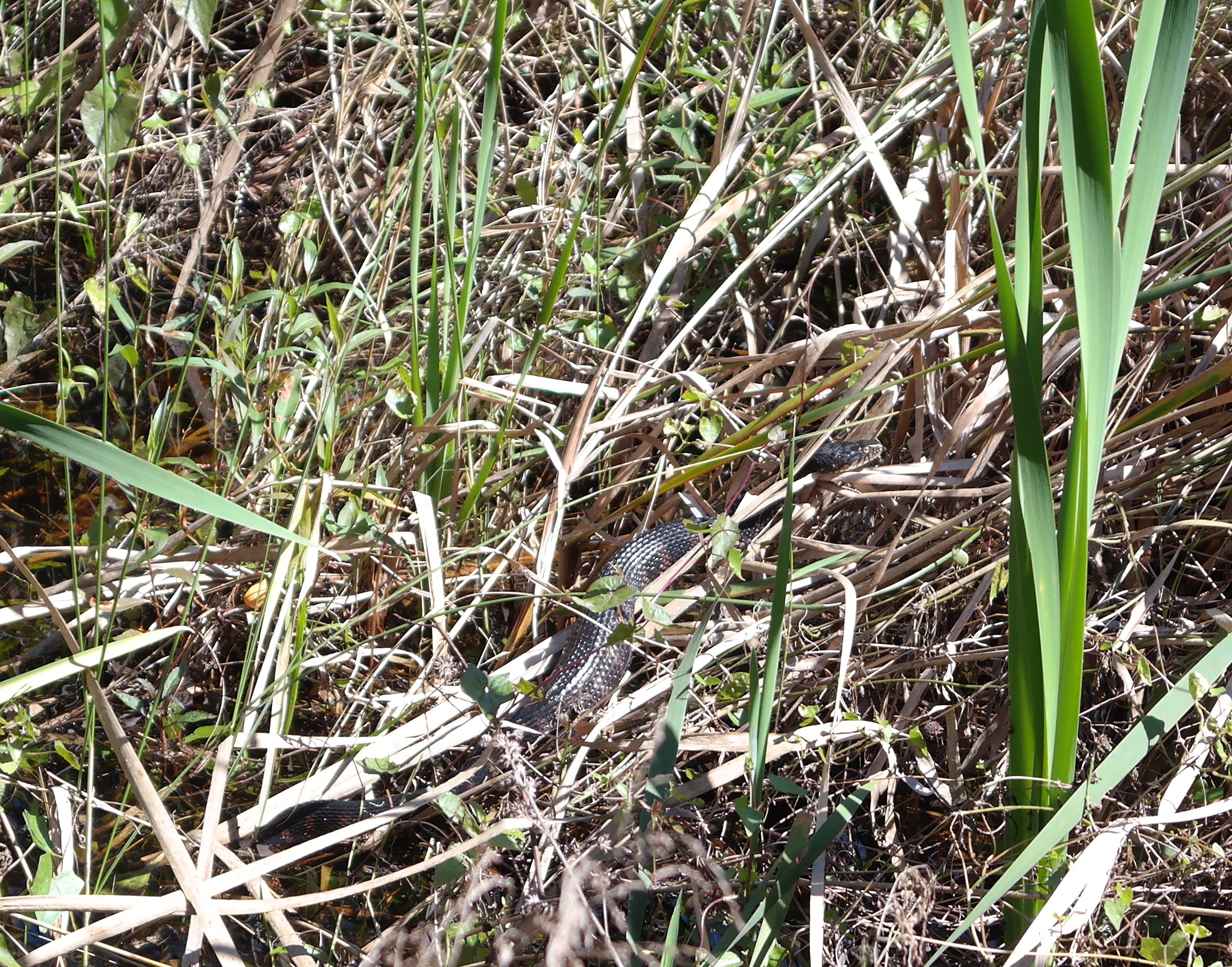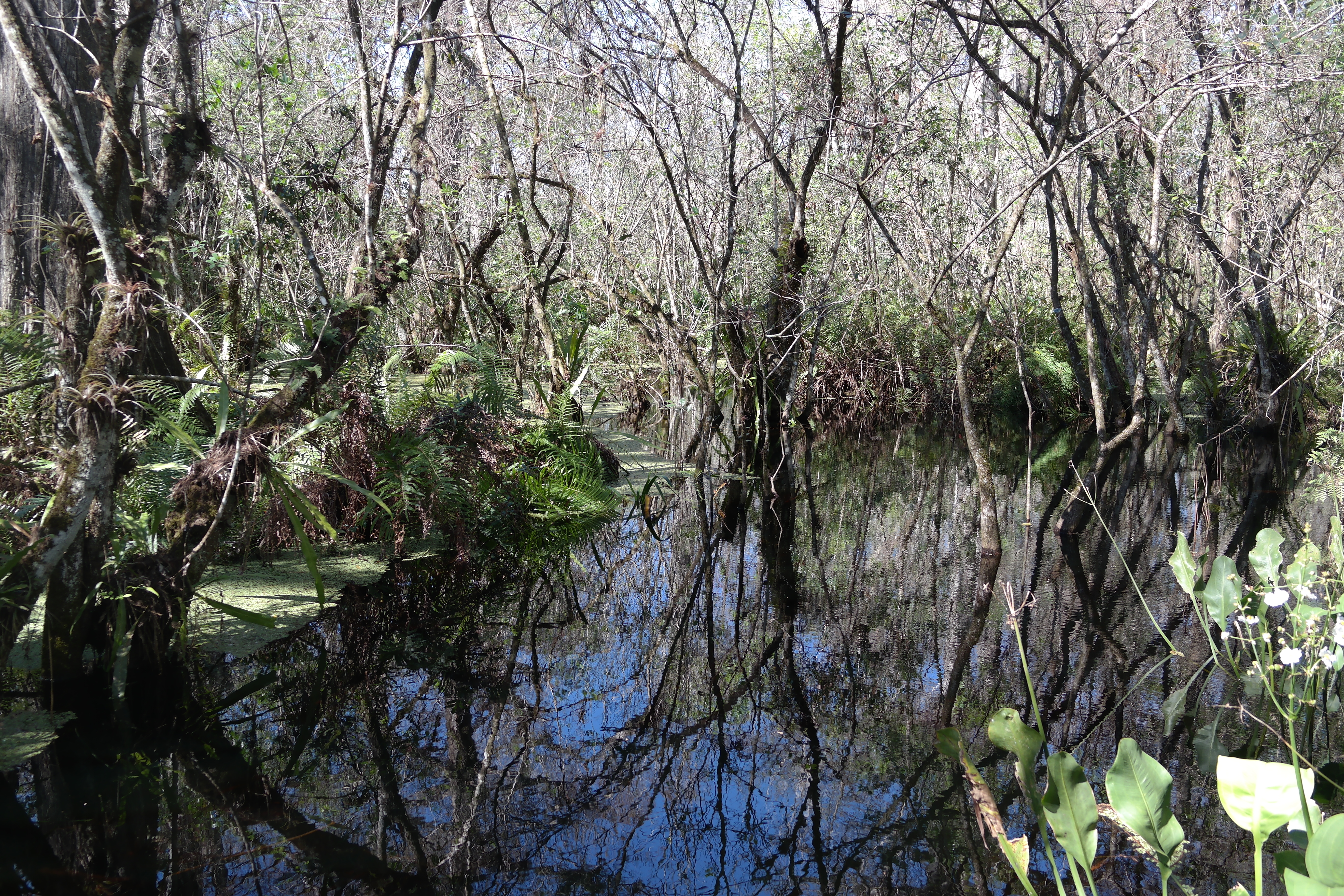Are you like me and like to stay dry yet still experience the swamp flora and fauna of the Everglades? Well, I have something for you: the wonderful Audubon Corkscrew Swamp Sanctuary in the western Everglades is just the ticket!
Corkscrew Swamp Sanctuary – How To Get There
Located about 30 minutes east of Naples, the drive to the Corkscrew Swamp Sanctuary alone is lovely and will give you a great introduction of what is to come! The Sanctuary is located at: 375 Sanctuary Road West, Naples, FL 34120. The boardwalk is open for visitors from 7 am to 5:30pm every day.
Coming from the east coast and on I-75, we elected to have breakfast in Immokalee, a place with a distinct ‘no-mans-land’ feel to it. From there onwards to the Corkscrew Sanctuary, for a few miles we passed fields and marshlands with lots of wildlife to see such as roseate spoonbills, woodstorks, alligators and plenty of other typical Everglades fauna. It’s a very lovely drive altogether once turning off I-75. There is also the opportunity to hike the Florida Panther Wildlife Refuge with two trails open to the public just north of the intersection of State Road 29 and I-75. There, you might be lucky to catch a glimpse of deer, bears or even an elusive Florida Panther, just don’t hold your breath! Due to extremely high water, we did not plan on hiking the Florida Panther Wildlife Refuge this time.
What Time Of Year Is The Best For Visiting The Sanctuary?
On account of my often documented mosquito magnetism, I would recommend a cool Florida winter’s day, obviously! They do have a fantastic center and gift store there, and this served me as a warning: you could buy mosquito repellent everywhere, at the front desk (there is an admission fee), as well as inside of the gift shop. I can only imagine, with being suspended over a swamp for the whole visit, one would get eaten alive there during summer months, well I certainly would – having said that, if you are not as sensitive as me in that regard, I can imagine Corkscrew Swamp Sanctuary would make a lovely day out in any season!
What Is There To Do And See?
Corkscrew Swamp Sanctuary, as well as having a lovely center/gift shop, is basically a very long and winding boardwalk (roughly 2.5 miles) over a swamp/wetlands area. Ordinarily, to see this type of landscape without a boardwalk, one would have to wade through knee or thigh high water. Something I like to avoid, quite frankly, but by all means if you are into that sort of thing look up Clyde Butcher’s swamp walks . One thing I would say is that we saw plenty of snakes, so you won’t see me going on one of those swamp walks anytime soon, but don’t let that deter you! Perhaps it just did…

So what else is there to see? Well, an amazing amount of wildlife and flora! Even on a cool day and with high water, traditionally not the best conditions to see much wildlife, we saw plenty, much of which had me very glad that I was a few feet above the swamp! We saw a banded water snake, a (poisonous) water moccassin, a red-shouldered hawk diving down and catching a little snake before eating it in full view, an alligator mother with baby and lots of other creatures and critters!
There is also a board at the entrance to the boardwalk, on which visitors write about the wildlife they see. By the afternoon, the list was HUGE! Mainly people were reporting bird sightings, but also snakes and other animals including alligators, otters, white-tailed deer and red-bellied turtles. You may even see a Florida Panther here. Apparently, someone also saw a pair of Red-Shouldered Hawks having some ‘sexy time’.
Corkscrew swamp is also home to many rare plants, including the Ghost Orchid. Don’t forget to check the bird feeders at the center as you walk towards the board walk! We actually saw a ‘painted bunting’ there, as well as a woodpecker.
The boardwalk is one-of-a-kind and definitely worth a drive to get to! The walk leads through various swamp landscapes such as pine flatwood, wet prairie, marshland and through what is apparently the largest old growth Bald Cypress forest in North America! Some of those huge trees are up to 130 feet tall and have a circumference of up to 25 feet!
The trees were truly stunning and I loved the fact that some of the biggest and oldest had plaques dedicated to them with a little story.
The Fascinating History Of The Audubon Corkscrew Swamp Sanctuary
Not only did National Audubon start protecting the wading birds nesting in the area from the early 20th century (since 1905), but they also saved the forest during the 1940’s and 1950’s when Cypress timber was much sought after and the forest under severe threat with so many other forests being destroyed. By 1954, Audubon took ownership of the Corkscrew Rookery: ‘5,680 acres were secured (640 acres were a gift from Lee-Tidewater Cypress Company) and the Corkscrew rookery became Corkscrew Swamp Sanctuary’ (from http://corkscrew.audubon.org/about/sanctuary).

In the early 20th century, egret and heron plumes were in high demand for the fashion industry. On the boardwalk, there are some references to wardens protecting the nesting birds from so-called ‘plume hunters’, if necessary with bullets! Luckily the protection efforts were successful and plume hunters went away subsequently.
Although Corkscrew Sanctuary is safe from development now, threats for the surrounding area remain with increasing development and agriculture, drainage and so on. Let’s support conservation efforts by paying the Corkscrew Sanctuary a visit and helping them to keep delivering a wonderful experience!
Have you been to Corkscrew Swamp Sanctuary? Do you know of any other such places? I would love to connect tamara.sunandsea@gmail.com
